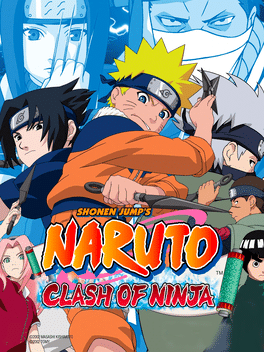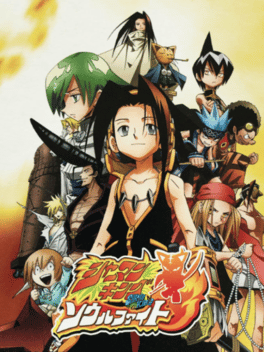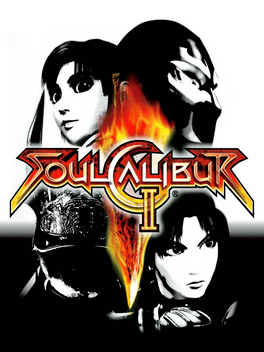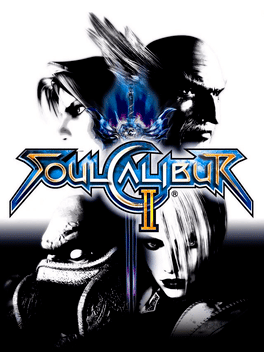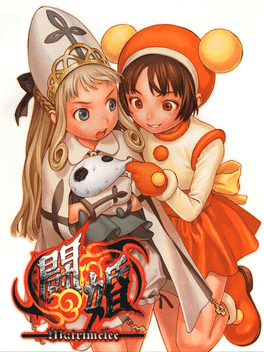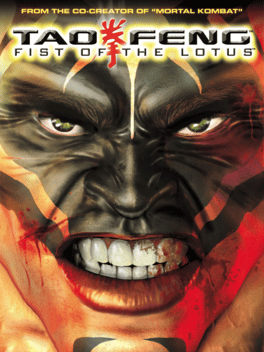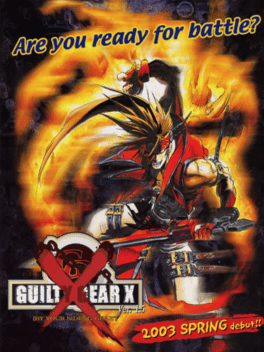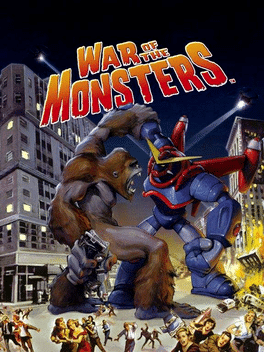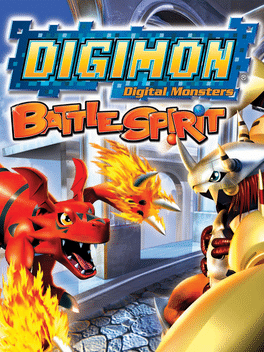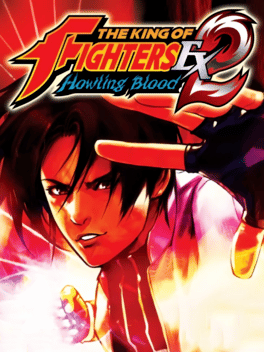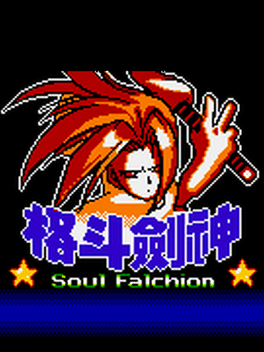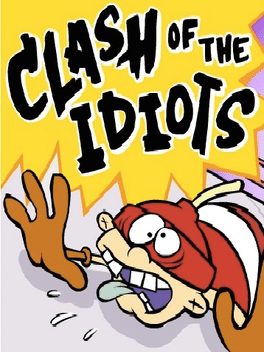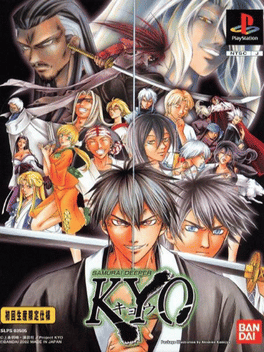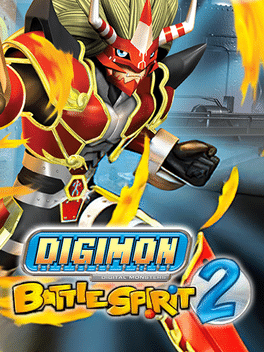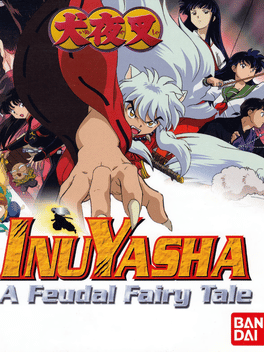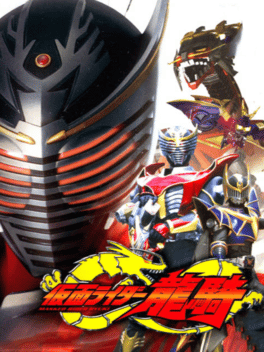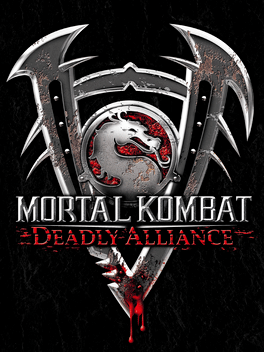New Fighting Games - Page 68
-
Naruto: Clash of Ninja
2003
star 6.4Naruto Clash of Ninja is the first of the Naruto Clash of ninja games.It includes 8 playable characters (and 2 unlockables) from the Naruto anime. -
Shaman King: Soul Fight
2003
star 3.5A fighting and strategy game based on the anime and manga Shaman King. Play as your favorite characters in various modes. -
SoulCalibur II
2003
SoulCalibur II
2003
star 8SoulCalibur II for the Xbox is an expanded port of the Arcade game, including Spawn as a playable character and new game modes. -
SoulCalibur II
2003
SoulCalibur II
2003
star 8SoulCalibur II for the Nintendo GameCube is an expanded port of the Arcade game, including Link from The Legend of Zelda as a playable character and new game modes. -
SoulCalibur II
2003
SoulCalibur II
2003
star 8.4SoulCalibur II for the PlayStation 2 is an expanded port of the Arcade game, including Heihachi as a playable character and new game modes. -
Power Instinct Matrimelee
2003
A year after the events of Power Instinct 2, the king of Certain Country wants to find a worthy successor for the throne. He wants the ideal husband for his little daughter (or a beautiful and strong woman for his older son) so he holds a fighting tournament where the prize is the hand of the princess and the throne succession. -
Tao Feng: Fist of the Lotus
2003
star 4Clothes will tear, blood will spill, and bones will break in the brutal fighting game Tao Feng: Fist of the Lotus. On the vicious streets and back-alleyways of New China, two fierce fighting sects battle in a race to uncover a valuable prize. During your fights throughout interactive environments, your fighter reflects all the physical damage he or she receives from opponents. You can either heal yourself from the beatings or build your powers to unleash devastating Chi attacks. -
Guilty Gear X: Ver 1.5
2003
Guilty Gear X ver 1.5 is the eighth entry in the Guilty Gear series, and a updated version of Guilty Gear X running on the Sammy's Atomiswave arcade system. Announced in February 2003 at the Amusement Expo, its main changes were in the field of character balance, adding moves to make it more similar to the recently-released Guilty Gear XX. Unlike the previous Guilty Gear X Plus update, Ver. 1.5 does not include an enhanced Story Mode nor Justice or Kliff Undersn as playable characters. -
KnuckleFighter-XPlus
2003
-
Virgin Queen Beauty
2003
-
War of the Monsters
2003
War of the Monsters
2003
star 7.2Get ready to embody the soul of a 100-foot tall monstrosity as you clash with opponents in thriving cities, run rampant through bustling streets, pulverize opponents with body slams and fight off military defenses. War of the Monsters enables you to re-live your favorite monster movies with ten different creatures engaging in all out carnage. Ten fully interactive environments offer numerous weapons, including steel girders, radio antenna, moving vehicles, building rubble, army tanks and more. Clobber opponents with thunderous uppercuts, hand-to-hand weapons and destructive special attacks. Use huge hunks of debris as a shield, topple buildings onto your foes or pick up and throw tanker trucks like toys. Take advantage of environmental attacks such as tidal waves and earthquakes to defeat your opponent and claim total domination. -
Digimon: Battle Spirit
2003
star 6.6Battle your way through seven spectacular stages in this Digimon race against the clock! Fun for the entire family, Digimon BattleSpirit provides classic fighting fun for 1 or 2 players, as you compete as one of your favorite Digimon characters in an exciting, exhilarating, digivolving battle! -
The King of Fighters EX2: Howling Blood
2003
star 6.8The King of Fighters EX2: Howling Blood is a fighting game released by Playmore, MMV and Sun-Tec for the Gameboy Advance. It is based on The King of Fighters 2000 and is the sequel of The King of Fighters EX. It was also ported for the N-Gage as The King of Fighters Extreme. Like its predecessor, The EX series takes place in an alternate timeline where the events of the NESTS Saga did not occur, as Kyo Kusanagi was found by Moe Habana rather than NESTS at the end of KOF '97, thus this game took place instead of KOF 2000 in the EX continuity. -
Soul Falchion
2002
Soul Falchion
2002
Soul Falchion is a weapon-based fighting game using Takara's engine. It has 20 characters, most (if not all) of which are based on characters from SNK's Last Blade and Samurai Shodown series, renamed (some with names taken from Mortal Kombat), slightly modified and recolored. The sprites are smaller versions of the sprites used in the Neo Geo Pocket Color games. -
Ed, Edd n Eddy: Clash of the Idiots
2002
The Masked Mumbler (Edd) has to defeat Lee Kanker 3 times so The Kanker Sisters will finally leave him alone. -
Samurai Deeper Kyo
2002
Samurai Deeper Kyo
2002
Samurai Deeper Kyo is a 2D versus fighting game based on the manga by Akimine Kamijō. -
Digimon: Battle Spirit 2
2002
star 8.3It is a sequel to Digimon: Battle Spirit. You can battle with the characters from the Digimon Frontier anime series. Developed by Dimps. -
Inuyasha: A Feudal Fairy Tale
2002
star 6.1Inuyasha: A Feudal Fairy Tale is a 2D fighting game starring characters from Rumiko Takahashi's manga and animé series, Inuyasha. The story centers around 15-year old high school student Kagome Higure, who inadvertently slips back in time to feudal Japan, where she becomes embroiled in a quest to locate shards of the Sacred Jewel of the Four Souls. "Feudal Fairy Tale," the game's main mode of play, follows this escapade and requires players to engage in a series of battles and mini-games in order to obtain the coveted shards. Initially, only Kagome and her half-demon companion Inuyasha are playable, but as players journey through the game, acquiring shards, more characters become available. Each character is able to perform both strong and weak attacks, as well as throws and counter attacks. Players can also execute more powerful combination maneuvers, including special and super attacks, which can only be initiated when the Spiritual meter is filled. Additionally, specific attacks can cause opponents to drop sha -
Kamen Rider Ryuki
2002
Kamen Rider Ryuki
2002
star 6.9All over the city, innocent people are being mysteriously abducted, never to be seen again. During his investigations of these incidents, Shinji Kido – an intern at the online news service ORE Journal – discovers one of the Advent Card decks at an apartment where every reflective surface has been covered by newspaper. He is soon sucked into the Mirror World, discovering the terrifying truth behind the disappearances: people are literally being pulled through mirrors by the monsters of the Mirror World so that they may feed. He is about to be killed by a powerful dragon named Dragredder when he is saved by Kamen Rider Knight: Ren Akiyama. Ren seeks to win the Rider War at all costs. He works with a young woman named Yui Kanzaki, who seeks her missing brother: the master of the Rider War, Shiro Kanzaki. Seeing Ren's strength, Shinji enters the Rider War not for the prize, but so that he may protect innocent people from the threat of the Mirror World, and stop the senseless fighting between the Kamen Riders. With -
Mortal Kombat: Deadly Alliance
2002
Mortal Kombat: Deadly Alliance is a 2002 fighting game developed and published by Midway for the Xbox, PlayStation 2, GameCube, and Game Boy Advance. This is the Game Boy Advance port. It was the first all-new Mortal Kombat fighting game produced exclusively for home consoles, with no preceding arcade release.
